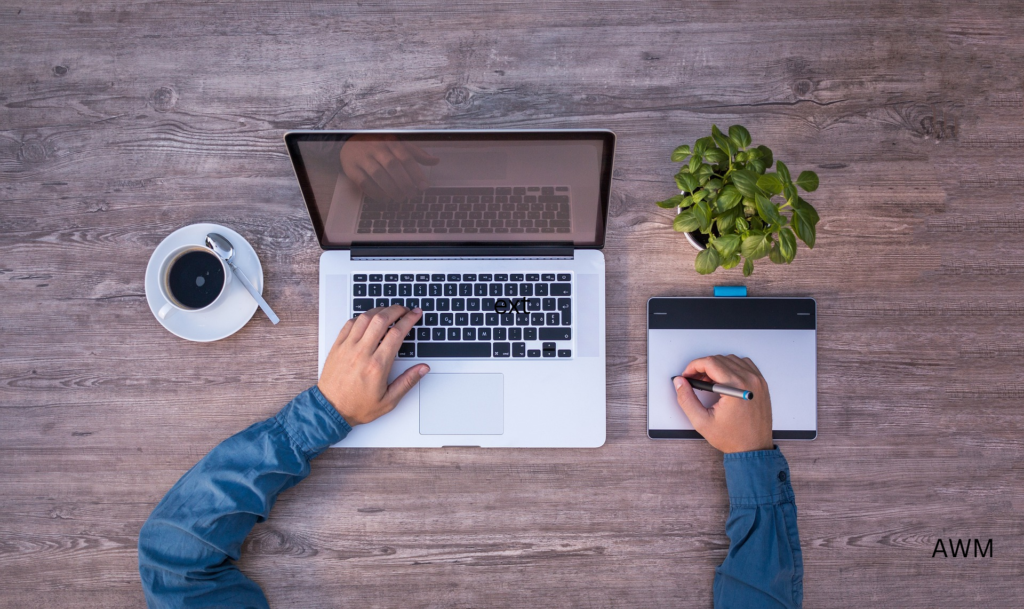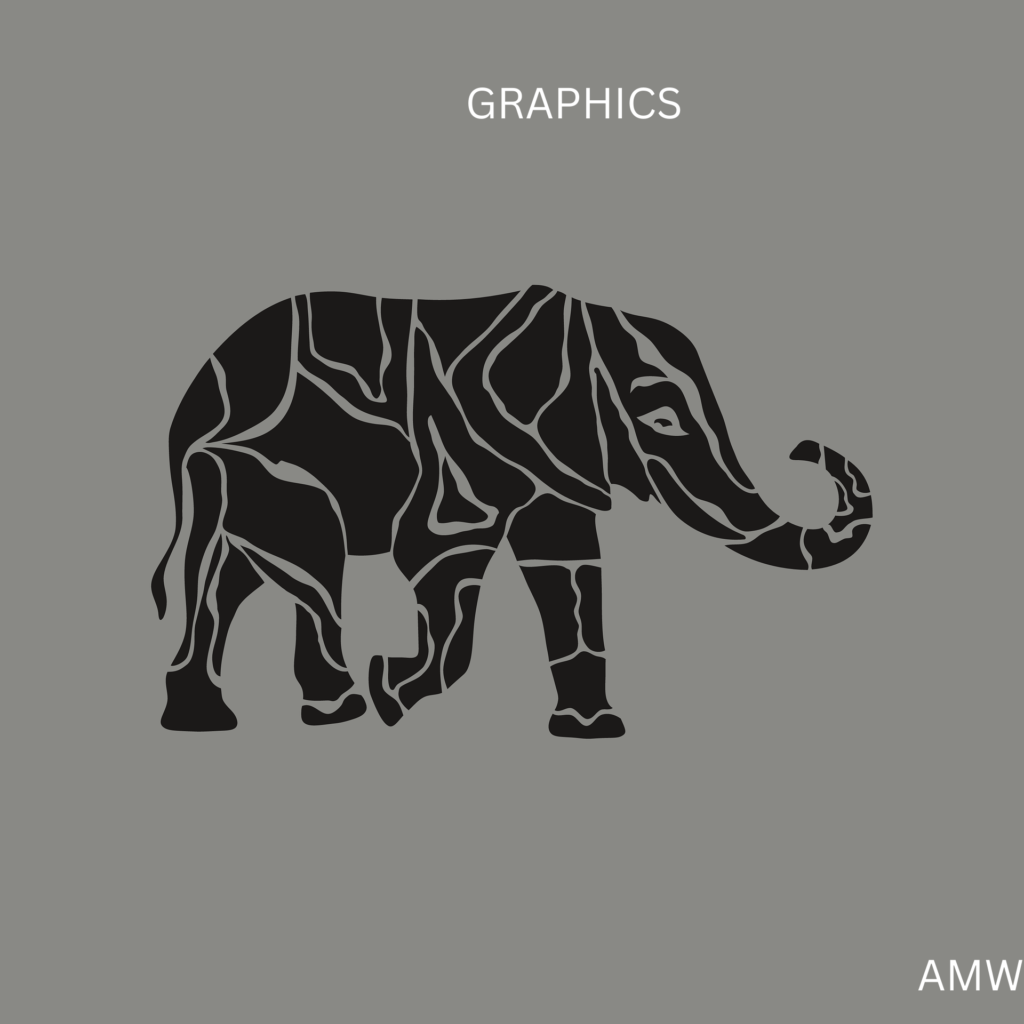
Graphic Design
Graphic design is a form of visual communication that combines images, typography, and layout techniques to convey ideas effectively. It is a creative craft used to design content across various formats and complexity levels, using elements like page layout, visual hierarchy, and design principles.
This approach often involves the use of raster and vector graphics, along with typography, to meet the needs and goals of the target audience. The primary focus is on the logical structure and visual harmony of design elements, ensuring an engaging and seamless user experience.
The True Purpose of Graphic Design
Graphic design is more than making things look attractive—it’s the art and strategy of communicating ideas through visual and textual content. At its core, graphic design aims to create engaging visuals that deliver a clear message and evoke the desired emotions from the audience.
By blending key elements such as typography, images, color schemes, and layout design, graphic designers craft visuals that not only capture attention but also improve brand communication and user engagement. A well-executed design enhances both the aesthetic appeal and the effectiveness of the message being delivered.
The Role of Graphic Design in Visual Communication
Traditionally, graphic design is centered around aesthetic appeal and marketing impact. Designers use elements such as images, colors, and typography to attract and engage viewers. But in the digital age, graphic design is no longer limited to static visuals—it’s an essential part of how users interact with digital products.
Introducing UX in Graphic Design
In the context of user experience (UX) design, graphic design must go beyond visual appeal. Designers must justify their creative choices—such as font, layout, and image placement—through a human-centered approach. This means every design decision must serve the end-user, making the product not only beautiful but also functional and user-friendly.

Designing with Empathy and Purpose
To create effective UX designs, graphic designers must empathize with their users. This includes understanding user needs, behaviors, and emotions to build designs that are both engaging and intuitive. In UX, visuals are not created for art’s sake—they are designed to solve problems and improve user interactions.
Expanding from Graphic to Visual Design
Graphic designers transitioning into UX must also adopt the mindset of a visual designer. This involves thinking beyond how things look and focusing more on how they function in real-world user scenarios. Every image, color, and layout must be part of a cohesive experience that guides and supports the user journey.
UX Considerations for Graphic Designers
When designing for UX, here are some critical considerations graphic designers must keep in mind:
● Information Architecture
Ensure your designs are structured in a way that makes content easily accessible and understandable for users.
● Visual Processing & User Abilities
Design with awareness of how users visually process information. Consider layout, spacing, and contrast for better usability.
A Real-World Example: Where UX Fails, Design Fails
Even the most stunning mobile app design can fail if it doesn’t meet user expectations. If users can’t complete a task within a few taps, the design falls short, no matter how visually appealing it may be. This highlights the need to merge visual design with UX principles for truly effective results.
The True Goal: Beautiful, Usable, and Meaningful Design
The ultimate aim of incorporating UX into graphic design is to create experiences that users find:
- Visually pleasing
- Highly usable
- Emotionally meaningful
Graphic designers must think holistically—designing not just for the user, but with the user in mind at every step.
“Design is a solution to a problem. Art is a question to a problem”
Conclusion: UX Makes Graphic Design Functional
In today’s digital-first world, graphic design is about more than aesthetics—it’s about how users interact, feel, and respond to visual experiences. By embracing UX, designers can create not just beautiful visuals but meaningful, purposeful, and accessible designs that truly serve the user.
Whether you’re designing a website, an app, or a brand campaign, always remember:
Design should look good AND work well.
In today’s digital world, graphic designers work with interactive tools and platforms, but the core principles of design remain timeless. From ancient art to modern apps, graphic design has always been about connecting with people emotionally. That’s why in the digital age, we say:
Graphic design is emotional design.
When done right, it captures attention, builds trust, and evokes the right emotions within seconds of a user’s first interaction.
Emotional Connection Starts with Visuals
The first impression matters. As a graphic designer, your work should create an instant emotional impact. One of the most powerful ways to achieve this is through color theory.
Examples of Color in Emotional Design:
- Blue conveys trust, calmness, and professionalism (ideal for finance or tech).
- Red signals urgency, passion, or alerts.
- Green suggests growth, safety, and permission (commonly used for success indicators or “proceed” actions).
Colors must align with brand identity and user expectations to ensure your message resonates instantly.
Fonts & Tone: Matching Emotion with Typography
Typography is another vital element in emotional design. Every font has its personality. For example:
- Sans-serif fonts feel modern, friendly, and energetic.
- Serif fonts appear classic, formal, and trustworthy.
Your typography choices should match the mood and tone of your message, helping users feel the right emotion as they engage with your content.
Designing the Full Emotional Journey
Good graphic design doesn’t just look nice—it guides the user emotionally from action entry. For example:
- A user lands on your homepage and instantly feels welcomed by the clean design and friendly visuals.
- As they scroll, smooth transitions and motion graphics enhance the flow and maintain engagement.
- Finally, a bold, well-placed call-to-action (CTA) button gives them a clear, satisfying next step.
This type of seamless emotional journey builds user confidence, loyalty, and conversions.

Understanding User Psychology in Graphic Design
To design emotionally, you need to think like your users. Understand how they see, feel, and respond to visual elements. That’s why professional graphic designers pay close attention to the following:
Key Design Principles That Drive Emotion:
- Symmetry & Balance
Creates a sense of harmony and stability. - Flow
Guides the user’s eye naturally from one element to another. - Repetition
Reinforces brand identity and creates consistency. - Patterns
Help in creating visual rhythm and structure. - The Golden Ratio (1:1.618)
A natural proportion that enhances aesthetic appeal. - Rule of Thirds
Helps place key elements where the eye naturally lands. - Typography Choices
From font style to weight and spacing, every letter shape evokes emotion. - Audience Culture
Always consider cultural context. For example:- Red is seen as a warning in Western cultures, but a symbol of luck in many Eastern cultures.
- Reading patterns differ by region (e.g., left-to-right vs. right-to-left), so layout should match the audience’s natural flow.
Conclusion: Design That Feels Right is Design That Works
Whether you’re designing a website, mobile app, advertisement, or product packaging, your work should spark a feeling, tell a story, and guide users emotionally.
By combining visual expertise with psychological insight, graphic designers can create impactful, human-centered experiences that truly connect.
This approach often involves the use of raster and vector graphics, along with typography, to meet the needs and goals of the target audience. The primary focus is on the logical structure and visual harmony of design elements, ensuring an engaging and seamless user experience.
Even the most stunning mobile app design can fail if it doesn’t meet user expectations. If users can’t complete a task within a few taps, the design falls short, no matter how visually appealing it may be. This highlights the need to merge visual design with UX principles for truly effective results.
The True Goal: Beautiful, Usable, and Meaningful Design
The ultimate aim of incorporating UX into graphic design is to create experiences that users find:
- Visually pleasing
- Highly usable
- Emotionally meaningful
Graphic designers must think holistically—designing not just for the user, but with the user in mind at every step.
Conclusion: UX Makes Graphic Design Functional
In today’s digital-first world, graphic design is about more than aesthetics—it’s about how users interact, feel, and respond to visual experiences. By embracing UX, designers can create not just beautiful visuals but meaningful, purposeful, and accessible designs that truly serve the user.